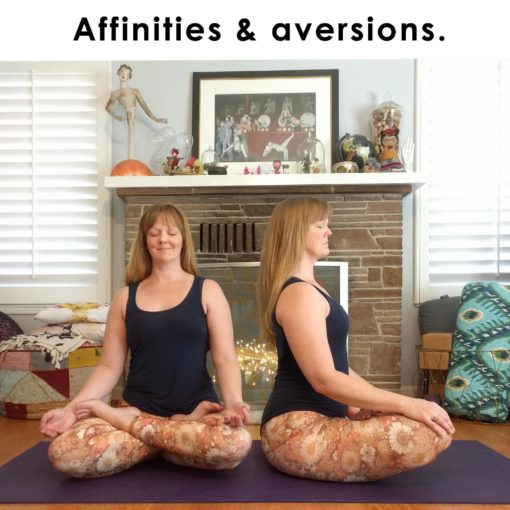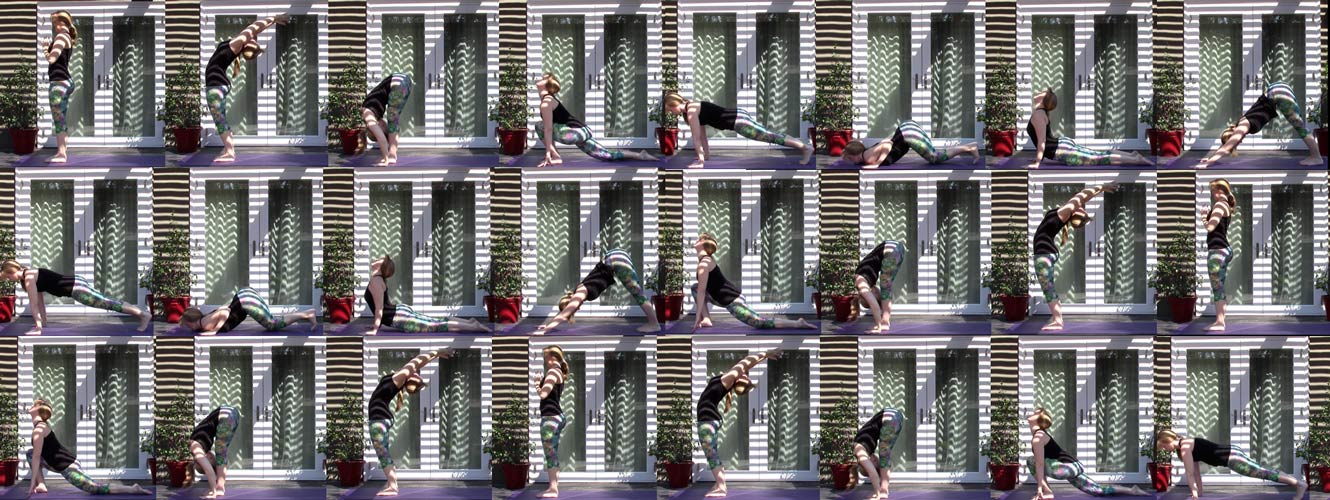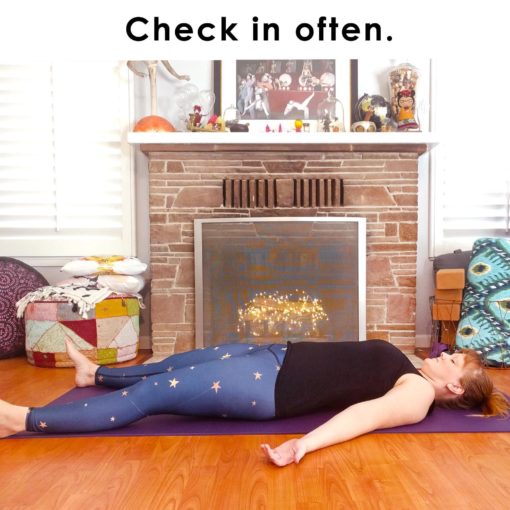
Sometimes I receive questions from students and colleagues about teaching, and I share the answers here.
Have a question you would like answered? Email me.
Q:
I’m feeling super under qualified and undeserving as an instructor right now. I haven’t nurtured my own practice at all lately, and while I have a home practice, I feel so anxious and hurried when I do it. The mental discipline just isn’t there. To make matters worse, I recently moved, and I haven’t found new studio that feels like home. How can I teach others when I myself don’t feel the inspiration from my yoga practice? I feel like a fraud.
Did you ever go through this when you were first starting to teach yoga? Any recommendations?
A:
I feel there are a couple of angles to approach your question from, and if I’m reading this from the right mindset hopefully what follows will resonate. I don’t think it’s uncommon for people to feel those feelings. I had a teacher who I adored, in her 60s, and I was surprised one day when I was having lunch with her to hear her express similar sentiments, because she’s someone I went to not to learn yoga, but to learn how to teach. She had a wonderful way of distilling information and making everyone feel comfortable and capable with where they were at, but here she was telling me that at the end of each class she just felt defeated and like she wasn’t a good teacher (and her other job was teaching English as a second language – so really – she knew how to teach!).
I don’t think many people notice, but on LinkedIn and FB, I list myself as a yoga “guide” – because teacher, instructor are heavy words and they indicate that I am going to impart knowledge in a certain, more hierarchical way. For me, yoga is a vast category of many components that at its heart can bring out the best version of you. I’ve had a personal practice for a long time, and it started for exercise and flexibility. Looking back, there was some quieting of the mind. At some point, the meditative components shared themselves with me. I’ve found usefulness in certain kriyas and pranayama for my health. Then I found how the practice could provide strength and more balance physically. So I have a lot of different aspects I can choose to share with others, not because I’ve been teaching for a long time, but because I’ve been practicing for a long time. So even in those times where my practice wanes, which happens to all of us, I have a rich history of experiences to draw from.
The point of all of this is when I step into a classroom, I don’t step in to teach. I step in to share my experience, and share what I know, and I fully understand that what my experience is may not resonate at all with some people in the room, which is fine. That doesn’t mean I’m a horrible teacher, it just means I don’t have the right guidance and experience to share with this person, and I have to be okay with that. The other side of the coin is when I step into a room filled with people to share my experience, I get to see 1 or 5 or 20 experiences unfold before me that are all different than mine. I have options – I could be really static and say, “this is my experience, and I’m trying to force that on you,” or I can start to observe what their experiences are, which helps me learn and grow. It also feeds me, providing inspiration that often pulls me out of those funks in my home practice.
The biggest thing here is that I don’t discount anyone’s experience. Just because I’ve been taught that your toe should point this way, you should rotate a leg that way, etc. doesn’t mean that if that person experiences pain or even discomfort they should do what I’ve been taught or they should even do what I’ve felt in my body. The body is very intelligent and will orient itself in the way it needs to in order to compensate for all the patterns and injuries it holds. So if I tell a classroom to do something, and I see someone not doing it, I might skip over it for now, or I might stop by and ask them if they were to turn in a certain way, would that feel better or worse? Then I generally learn something, and they have the ability to control their own experience. Plus, always keep in mind you don’t have x-ray vision, so you have no idea what is happening inside their body.
The best thing about approaching this from a sharing & guidance standpoint is it means you are never under-qualified or fraudulent – you’re sharing your authentic experience. You will have people that are on the same path you were or are on, and you will have people that are in a different place. Your students are the ones that are on that similar path, or that can take something from what you’re sharing. That’s on a physical level, as well as the mental/emotional piece of it if that is part of your guidance. Personally, for me, I feel really weird when I cross the line into sharing anything that feels it has to do with morality and ethics, as this resonates with me in a realm of religion. Obviously for others it doesn’t, or they’re searching for that, but when I experience talks on yamas, niyamas, loving others, some of the Hindu mythologies, it becomes very much like preaching and church, things that turn me off very quickly. So it’s taken me a while to find my voice in sharing more of the mental aspects of the practice, and the stories I love, because they can very easily go into these directions in my head. That said, there’s lots of people these things resonate with, so other teachers teach it and have a great following for it because that’s their experience, and they’re comfortable with that experience. They share what they’re comfortable with, and I share what I’m comfortable with.
Long answer shortened: it boils down to share what you know, and be open to how others experience that sharing. Empathy is your best friend when teaching!
That makes what I read as the second part of your question really kind of simple – you have to have a personal practice to teach from, otherwise what can you share? It may wax and wane from time to time, but that doesn’t invalidate previous experiences, which you can still share. Kudos to you to still getting on the mat. It’s something everyone struggles with, and now you will know how to share your experience with that, in time, once you find your way through that struggle.
Personally I’ve always found a home, self-guided practice more beneficial to me in creating my classes, but I feel I’m often in the minority here. For me the personal practice is where I get to play and explore and see what is going on inside of my body, and in general just move where I want to move. Going to classes, community – all of that gives me a spark when I get in a rut, but usually hitting up a good class or following a video will give me new ideas of ways to move, and that spark refills my home practice. There are some poses that I always or almost always do, then the rest is guided by what my body feels like it needs based on laying in savasana for a few minutes to start.
There are many days when I don’t want to practice, because I have too much to do, or I think I’d rather lay on the couch and watch TV, or have a glass of wine… Some days those things win out. A couple of things I do to try to combat this:
- Tell myself I will just lay in savasana for 5 minutes, then I can do whatever I want. Generally, laying in savasana for 5 minutes makes my body want to move because it needs to unwind, and I’ll get at least a little practice in.
- On days when I practice, at the end, I repeat to myself something along the lines of, “I practiced yoga and now I feel good.” 5 times or 10 times.
Reasoning: it takes 3 to 5 times of something good or positive happening to make an imprint in your brain over 1 time of something negative. So in essence, I’m trying my damnedest to wire my brain for doing the good-for-me thing. - Put my practice on the calendar. There’s a chunk of my day that says “yoga practice”. It differs each day where it is because my schedule differs, and there’s a couple of days where I don’t have it on the calendar.
Sometimes I’m creative and all this new stuff starts pouring out of me. Other times I get in a rut and just feel blah about it all. That happens. Sometimes for a few days, sometimes for months.
Then the hardest part about sharing your practice is when you get on the mat for your practice, you do not fall into a mind trap of creating a class. Sometimes you do approach the mat that way, though it’s not really your personal practice then. So when I practice, I try my best not to think about how this would be in class. If I do feel inspired, the great, but I keep with my practice. At the end, I will grab a notebook and write down everything I did, which means my mind has to work hard at the end to try to remember, but usually if I get stuck, I start to mime the movements that led up to wherever I’m stuck, and it comes back to me. So I have all these little sequences and notes about things I want to teach in a notebook, and I can pull those out to start from when I create a class. For me the muscle memory is strong enough most times to allow me to write down a 90 minute practice, but if that’s not the case, film your practice with a GoPro or timelapse so you can just scroll back through later and see what you did.
I hope this helps. Take what resonates with you from it, leave the rest, and most importantly follow what your intuition tells you.




